Last updated on March 14, 2024
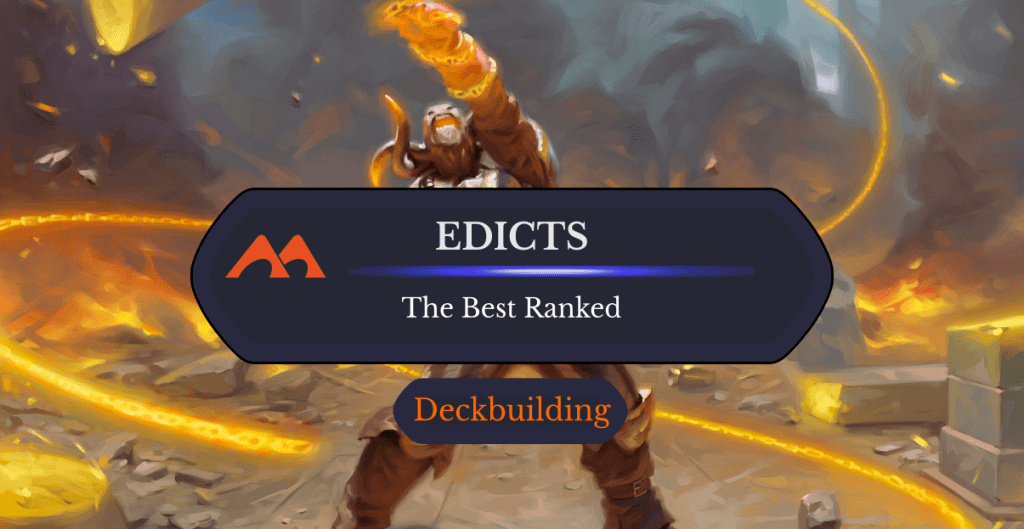
Angrath's Rampage | Illustration by Victor Adame Minguez
Edicts are a classic form of removal dating back to Diabolic Edict. It’s a powerful form of interaction that circumvents several defensive abilities and can ruin strategies like Voltron that depend on a single large creature.
As an effect introduced in 1997, edicts have had years for R&D to tinker with them and release all kinds of variations, from strictly better versions of Diabolic Edict to unique cards that build upon the established design space.
But which of these edicts are the best? Let’s find out!
What Are Edict Effects in MTG?
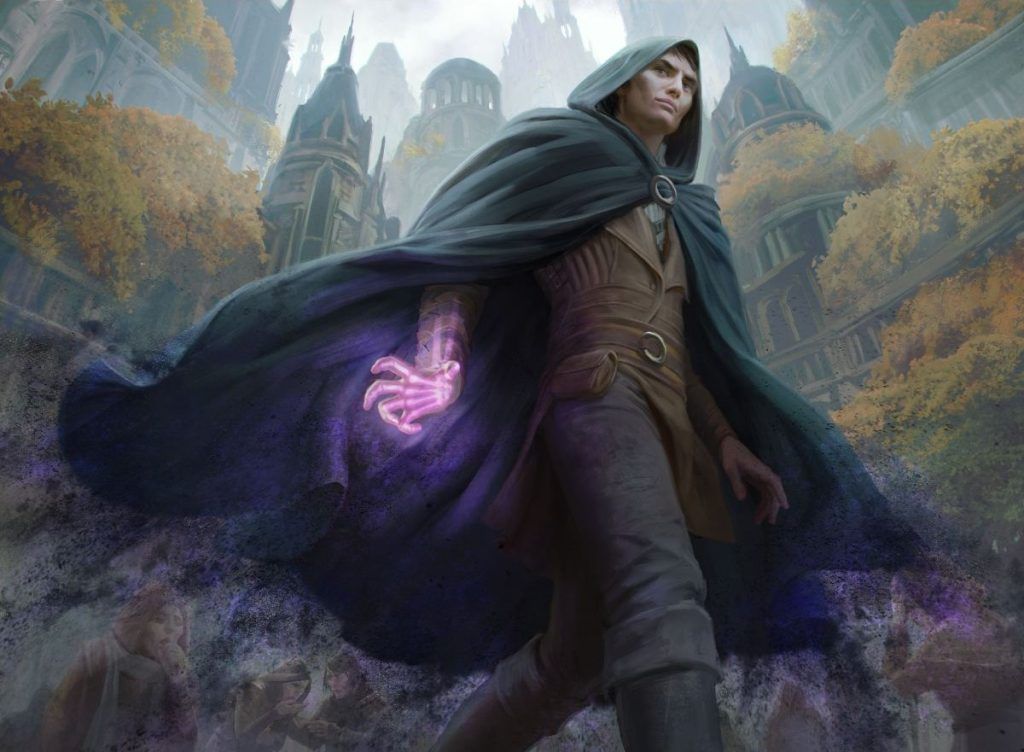
Plaguecrafter | Illustration by Anna Steinbauer
Edict effects make players sacrifice permanents, typically creatures. Edicts have a few different templates: “Each player sacrifices,” “each opponent sacrifices,” or “target opponent sacrifices.” The difference between “each opponent” and “target opponent” is negligible in 1v1 formats but is instrumental for EDH players to determine which ones are worth playing. The sacrifice option has two variations: Your opponent sacrifices permanents, as with Lord Xander, the Collector, or your opponent chooses a creature and sacrifices the rest, like Cataclysmic Gearhulk.
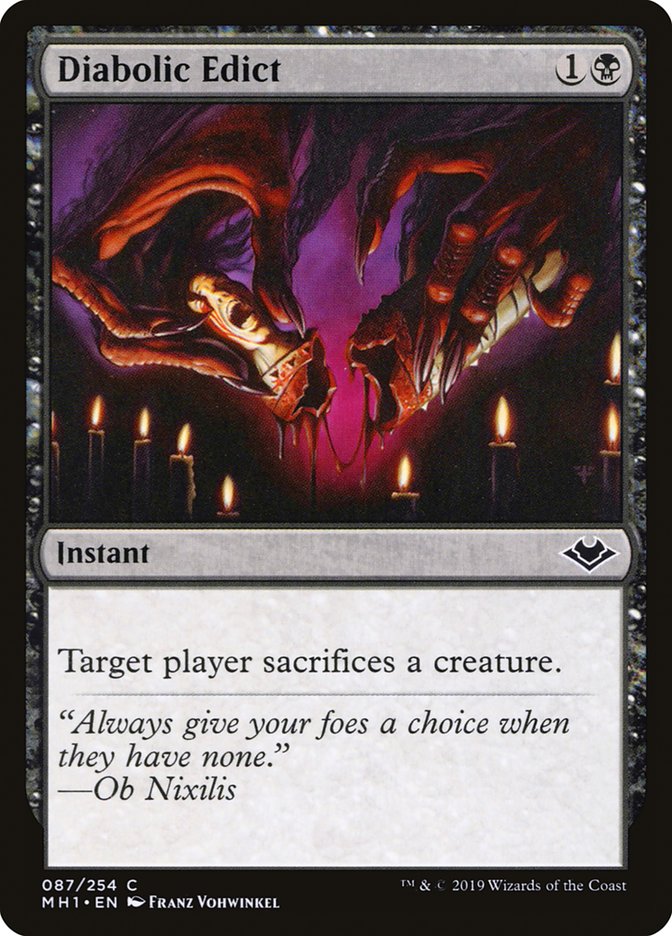
Edicts have one glaring weakness: They give your opponent options. Your opponent always sacrifices their weakest creature when targeted by Diabolic Edict. Even with Wing Shards nabbing attackers, you’ll only get the worst attackers. Because of this, they typically scale poorly because the longer a game goes, the greater the odds of your opponent controlling irrelevant creatures to sacrifice.
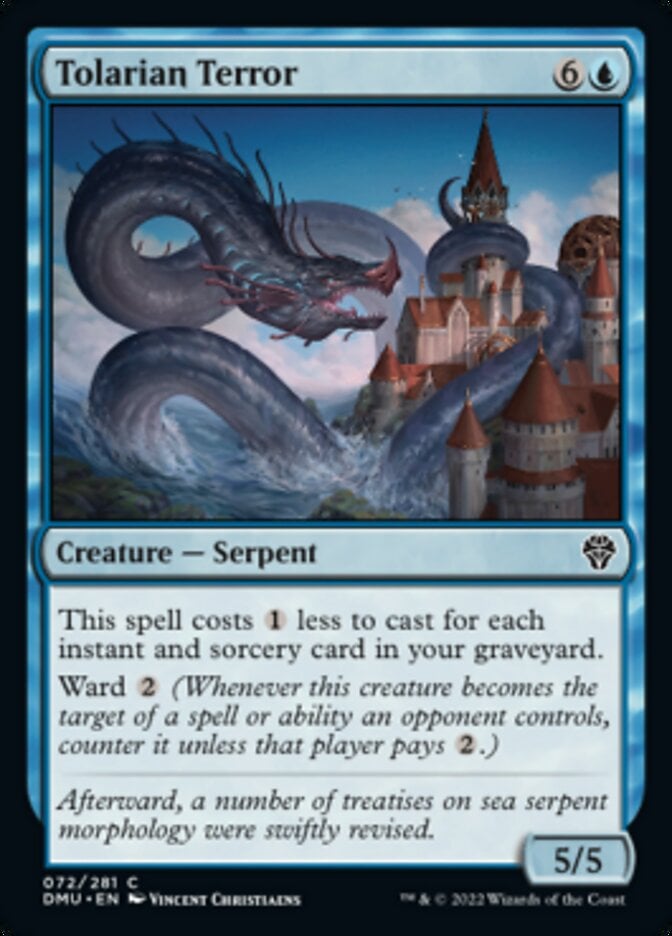
But edicts have their uses! They’re useless against decks that spam the board with tokens but fantastic against decks with a small number of threats, like Tolarian Terror decks in Pauper. They also circumvent certain defensive abilities. Edict effects generally don’t target the creature, so they get around hexproof and shroud. Making your opponent sacrifice a creature gets around protective abilities like indestructible, too.
Recent edicts have addressed these weaknesses. Sheoldred's Edict and Gix's Command are two examples of edicts that combat the traditional weaknesses of the effect by forcing your opponent to sacrifice a non-token creature or their biggest creature. They’re still not perfect, but much more effective than Cruel Edict.
EDH players get a unique benefit: Edict effects can often become three-for-ones. Edict effects like Plaguecrafter and Tithing Blade that affect each player or each opponent result in removing several creatures instead of one.
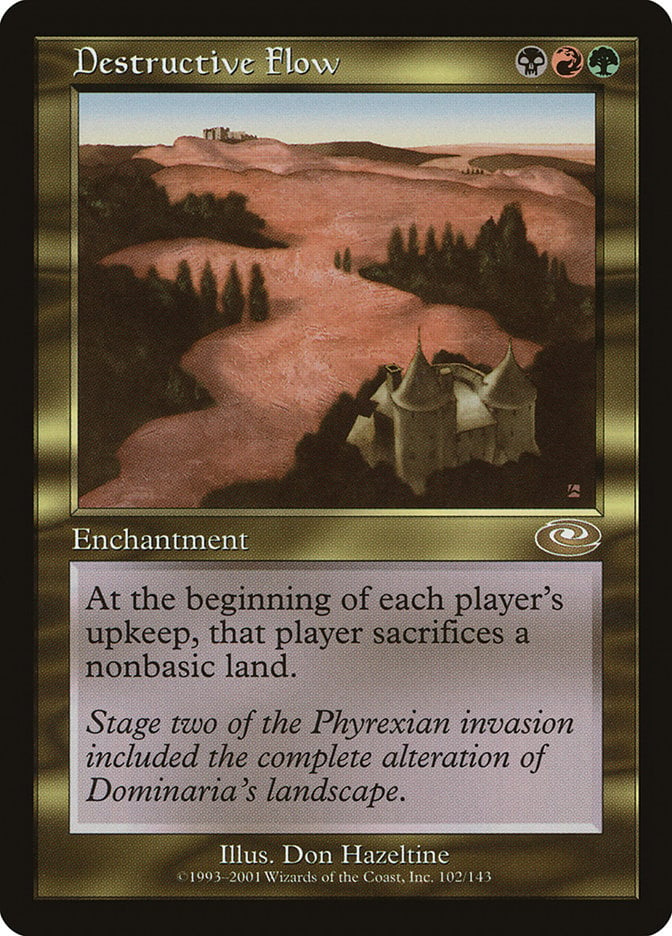
For this list, I’m focusing on edicts as removal spells. Thus, I’m excluding various effects that make players exclusively sacrifice lands, like Destructive Flow, though some edicts on the list make players sacrifice lands in addition to other card types. The best edicts on this list are the most efficient ones or those that offer value beyond a simple sacrifice ability.
#45. Whims of the Fates
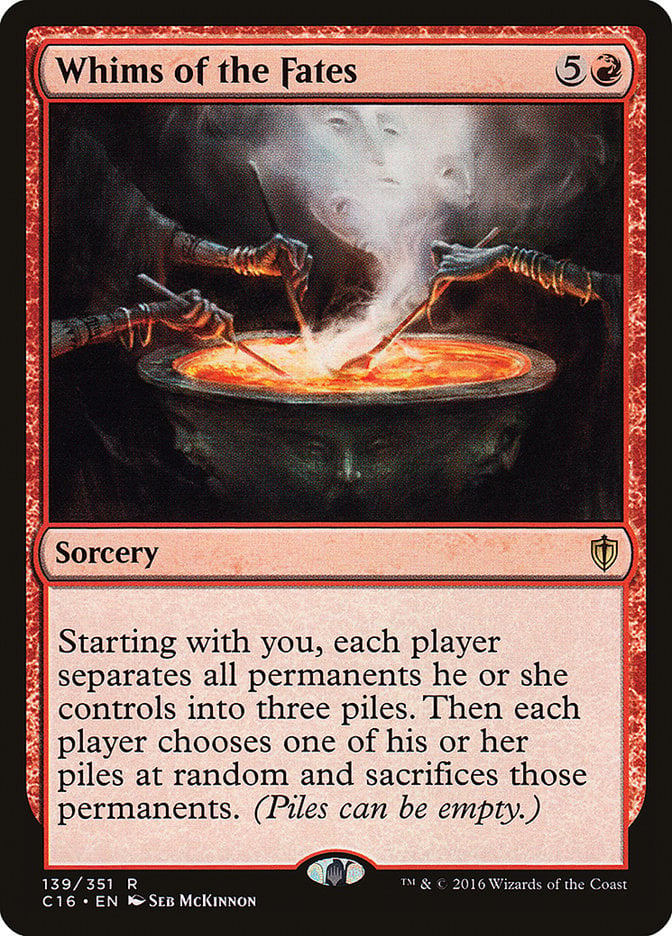
Whims of the Fates is as sketchy as it is awesome. The concept is brilliant, but Whims of the Fates is expensive and altogether too random to be reliable outside chaos decks.
#44. Rite of Ruin
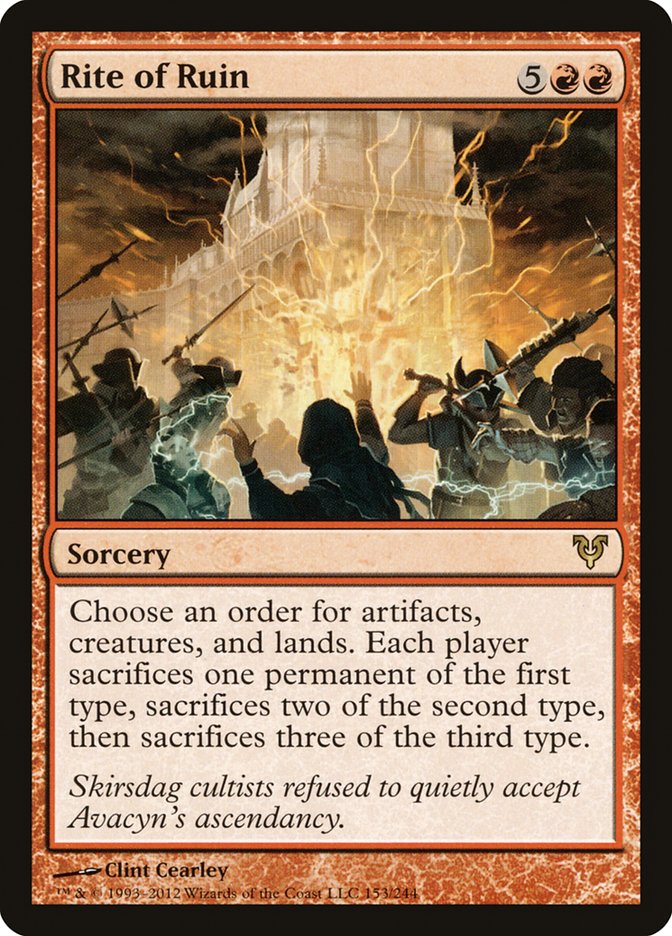
Rite of Ruin removes multiple threats and opens the path to intriguing gameplay decisions. That said, 7 mana is a lot in EDH these days. Tables slow enough for this to be impactful don't look kindly upon land destruction.
#43. Pick Your Poison
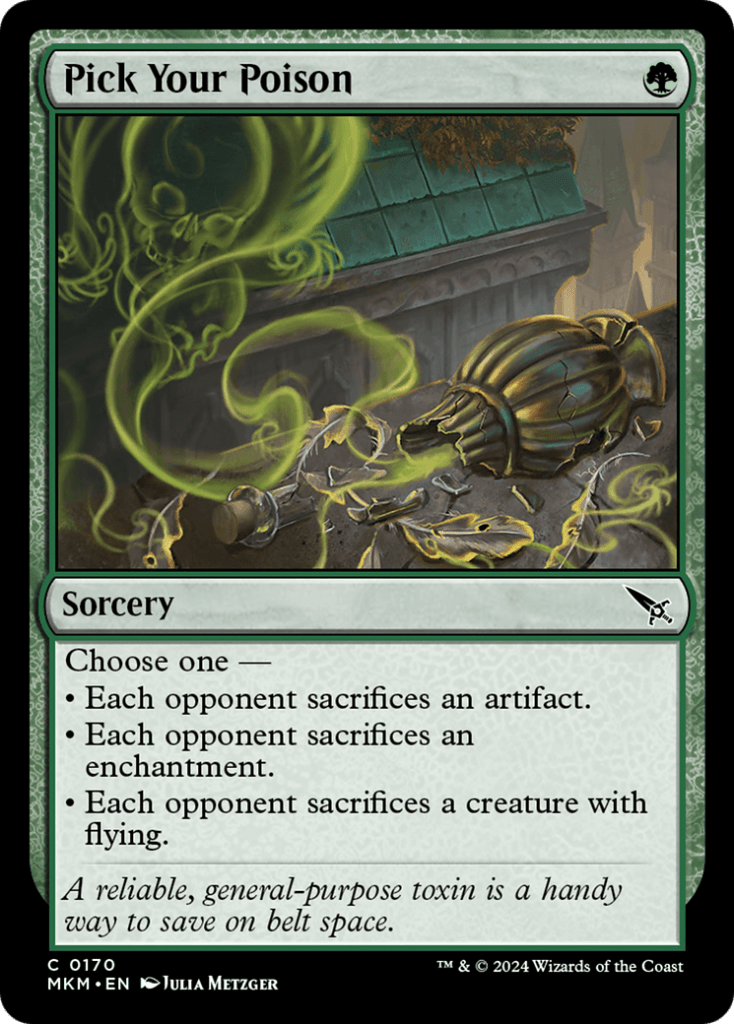
I don't know what to make of Pick Your Poison. I suspect it's good if only for its flexibility relative to its mana cost and three-for-one potential (in EDH), but don’t know if those benefits outweigh the blunt value of Nature's Claim.
#42. Reign of the Pit

Reign of the Pit perfectly encapsulates the weakness of edict effects. It’s easy to look at this and aspire to cast it, kill three creatures, and net a 6-mana 15/15. The bland reality is a 6-mana 4/4 or something similar. I wouldn’t consider this unplayable, especially in casual token lists.
#41. Necrotic Hex
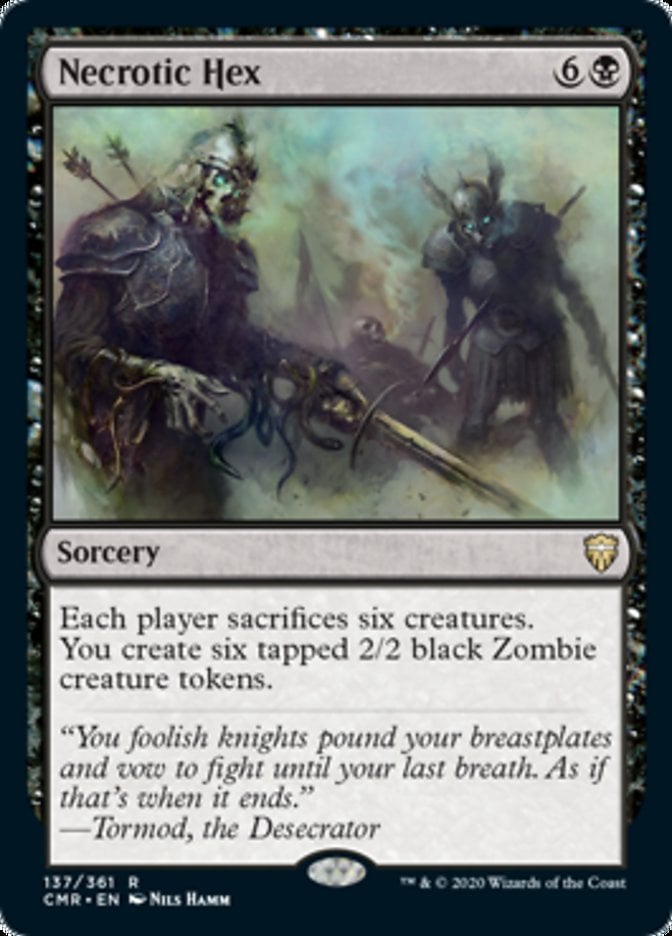
Necrotic Hex goes beyond spot removal and ventures into the territory of a full-blown board wipe. An expensive board wipe that leaves you with a strong board presence has a place in some decks. The tokens being zombies are a bonus since it’s a well-supported creature type.
#40. Molder Slug
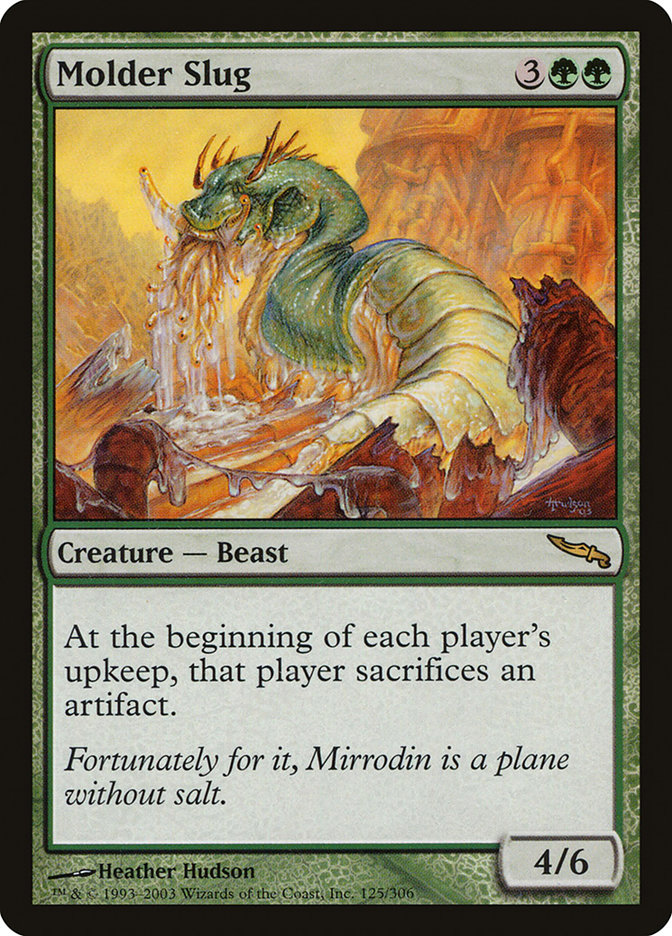
Molder Slug is a slow way to chew through opposing artifact decks. It’s a compelling option restrained by being too expensive to punish players who churn out Signets and Talismans as their early-game plays.
#39. Anowon, the Ruin Sage
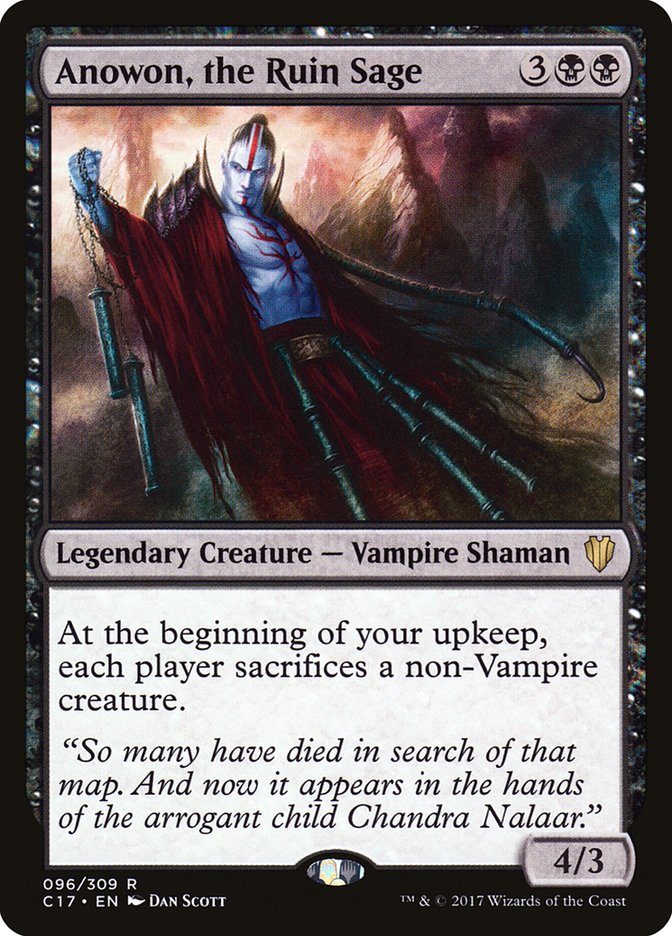
Anowon, the Ruin Sage is highly specific. You don’t want it outside vampire decks, but those decks are happy to restrict your opponents’ ability to maintain a board state while leaving yours untouched.
#38. Wave of Vitriol
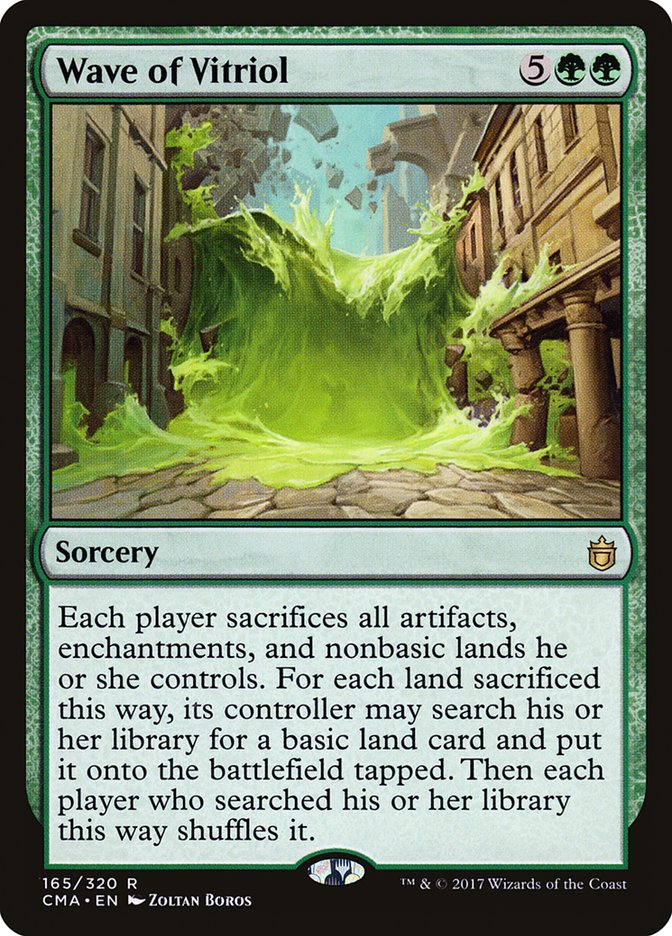
I would play Wave of Vitriol if I knew my local meta had loads of enchantress and artifact decks, but it’s unimpressive against decks that only play a handful of mana rocks. It’s excellent at punishing greedy mana bases; Commander could benefit from a few more effects like this.
#37. Shattergang Brothers

Once a fearsome commander, Shattergang Brothers hasn’t held up to the tides of power creep very well. A repeatable edict effect with flexibility isn’t irrelevant, however. It can still be a reasonable grindy commander for a casual deck.
#36. Tariff
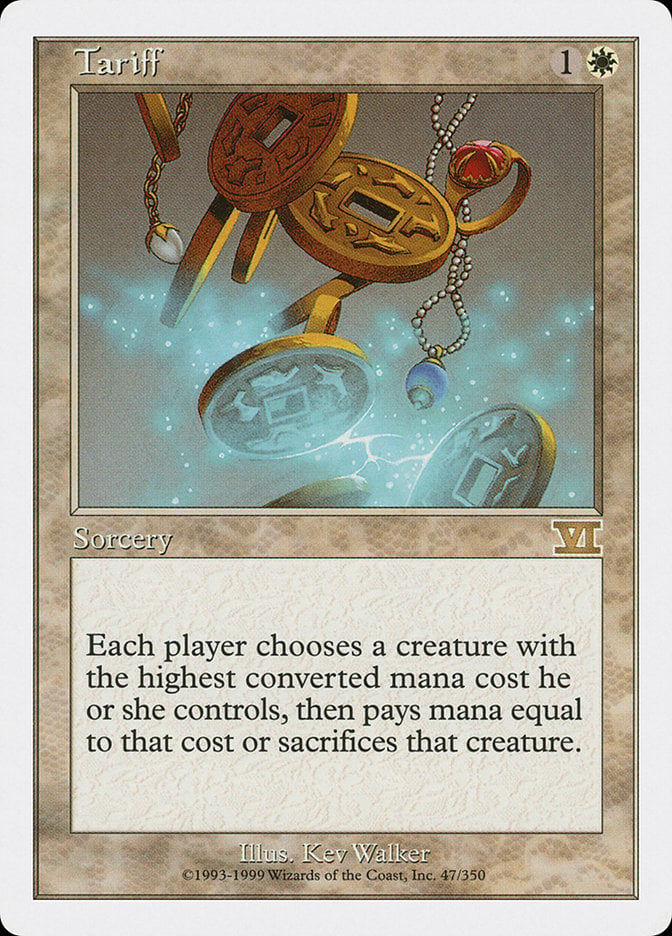
Tariff works best in casual games where every player is throwing around massive haymakers and tapping out each turn. It’s also interesting as a response to decks using cards like Reanimate or Show and Tell to cheat threats into play.
#35. Malik, Grim Manipulator
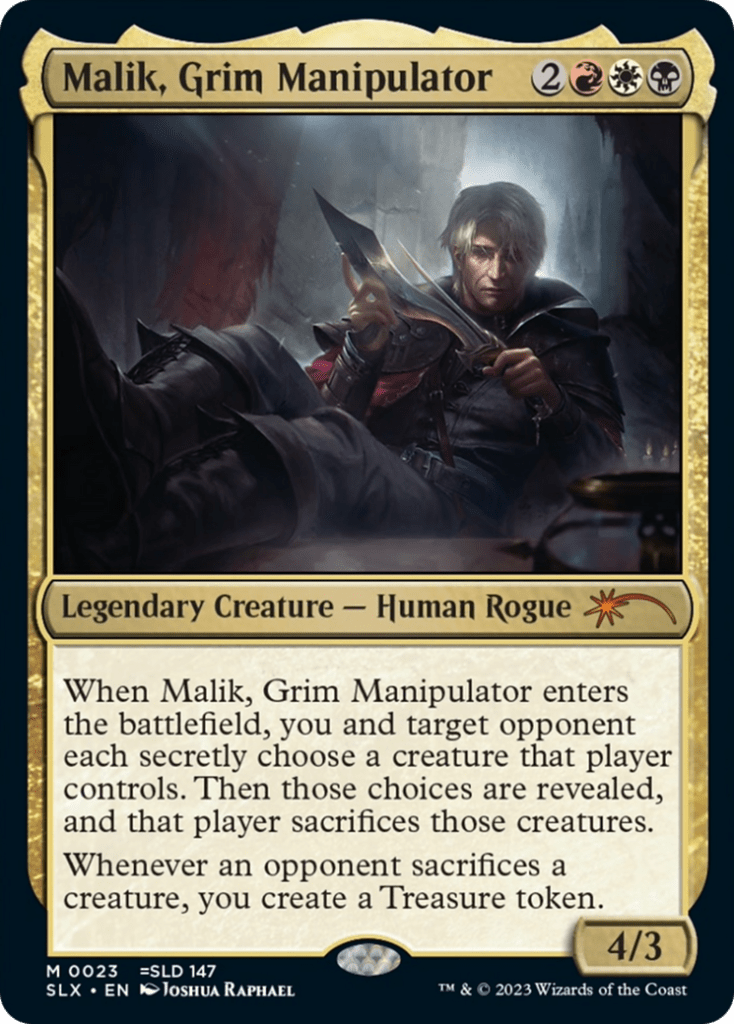
I would like Malik, Grim Manipulator much more if you got multiple activations from this ability without additional work. But I still like it. Anything requiring players to make a secret choice is compelling, and white has plenty of flicker effects to get multiple triggers from Malik.
#34. All Is Dust

All Is Dust is fantastic for Eldrazi and artifact decks produce big mana and populating the board with colorless permanents. No other strategies care about a 7-mana wrath.
#33. Death Cloud
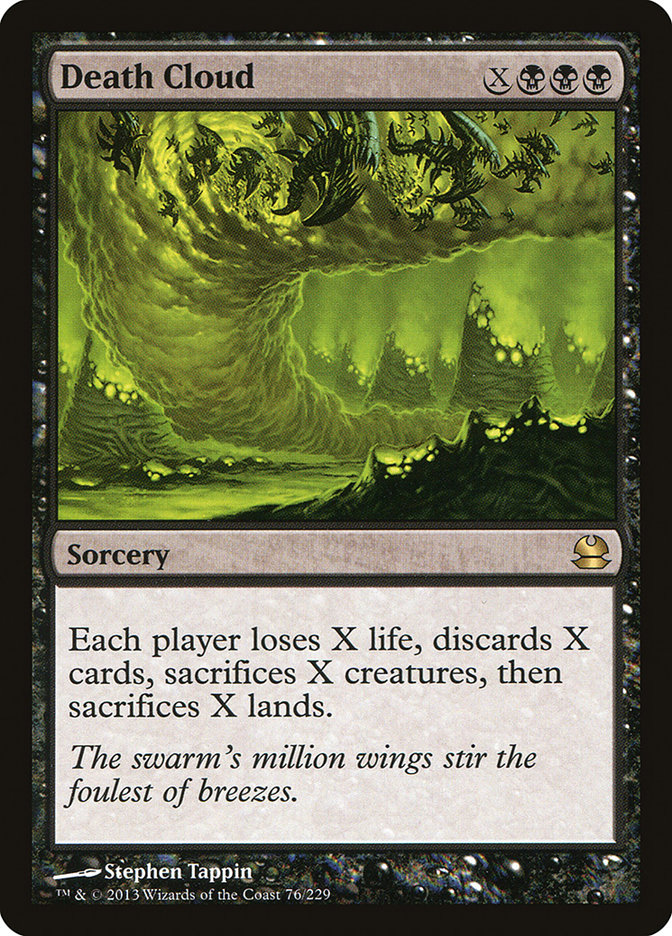
Symmetrical effects are rarely fair as you can build around them. Death Cloud is harder to leverage than most, though raw mana ramp to ensure you have more lands than your opponents can do the trick. It’s also a great way to draw the game with infinite mana!
#32. Rankle’s Prank
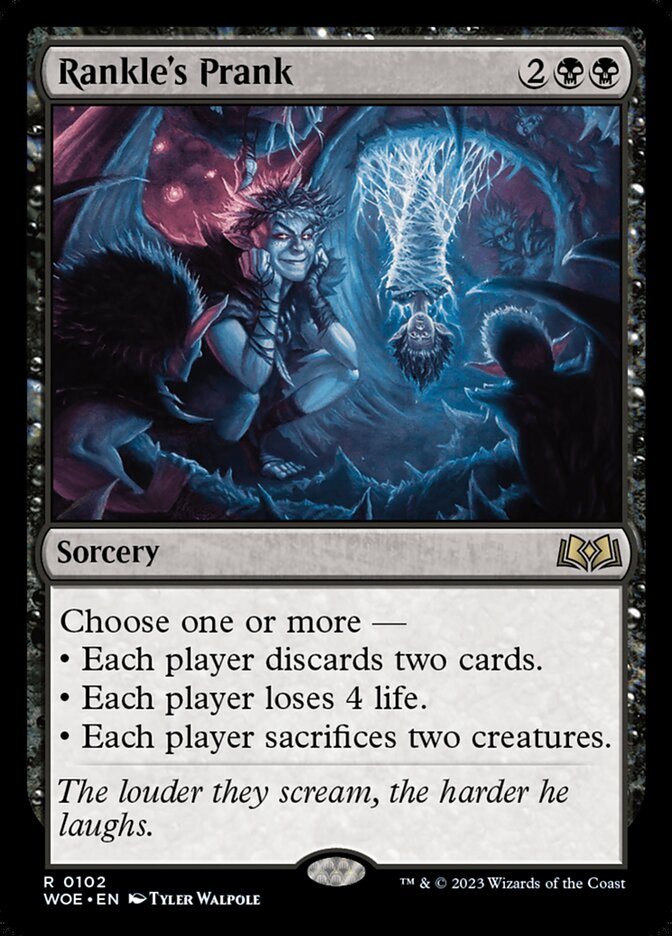
I’m perhaps a bigger fan of Rankle's Prank than the card deserves. But the flexibility and potential to wreck an opponent by ripping through their board and hand or burning them out endears this card to me.
#31. Cruel Ultimatum
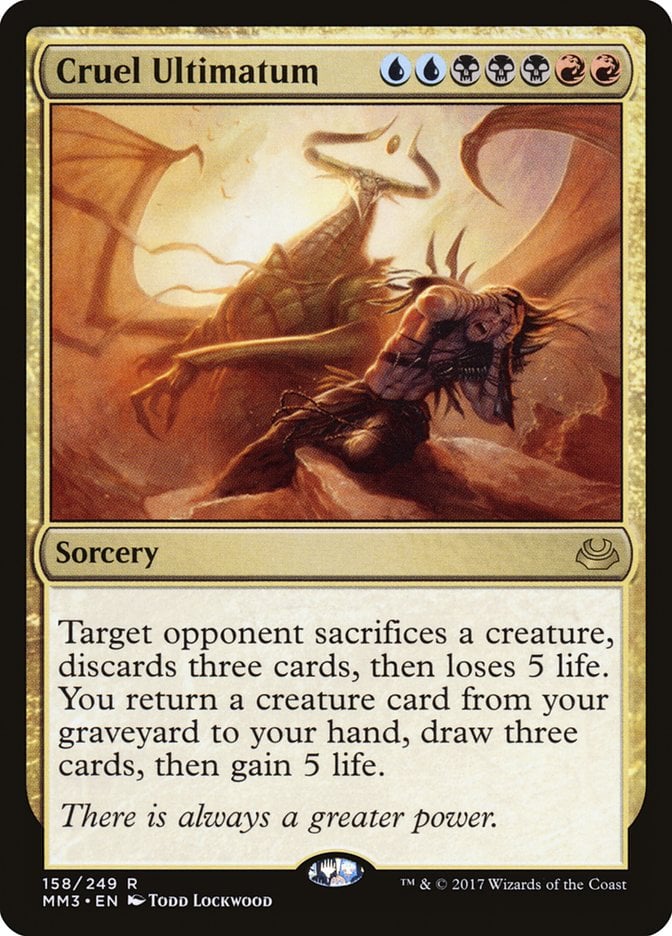
With a high, color-intensive cost, casting Cruel Ultimatum takes a lot. The reward is a burst of card advantage, of which the edict is just the first level. Getting board advantage, raw card advantage, and a 10-point life swing is reasonable for 7 mana.
#30. Rankle, Master of Pranks
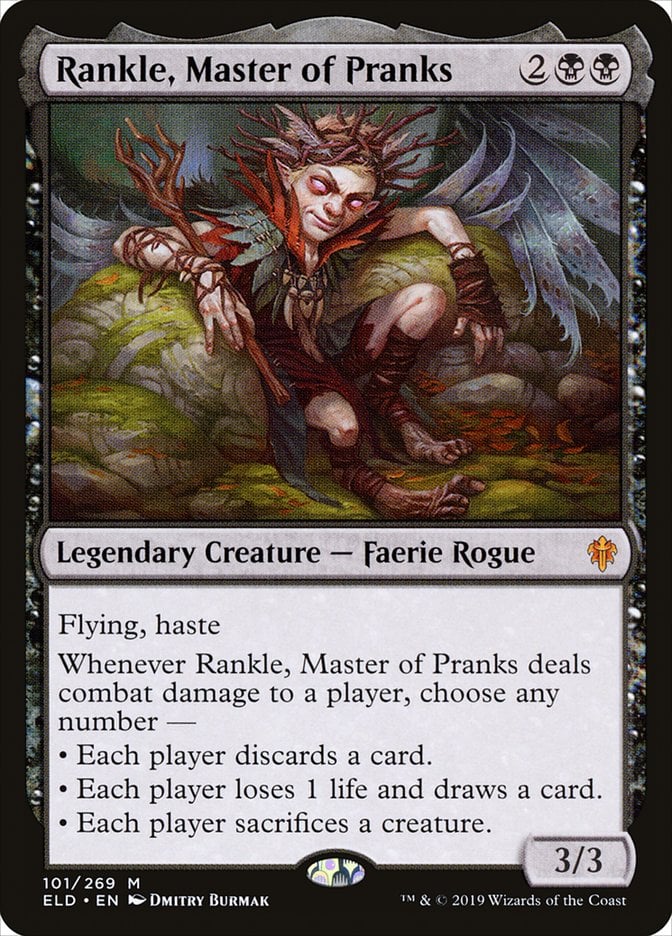
Rankle, Master of Pranks provides serious pressure as a hasty flier. Their ability allows you to leverage that pressure by stripping away your opponents’ resources, though you’ll want some sacrifice fodder for maximum impact.
#29. Tithing Blade
2 mana is standard for an instant-speed edict, so Tithing Blade is slightly behind the curve as a sorcery-speed spell. It makes up for this with flexibility: It’s relatively easy to flicker an artifact for extra triggers or sacrifice it for additional value.
#28. Ravenous Rotbelly
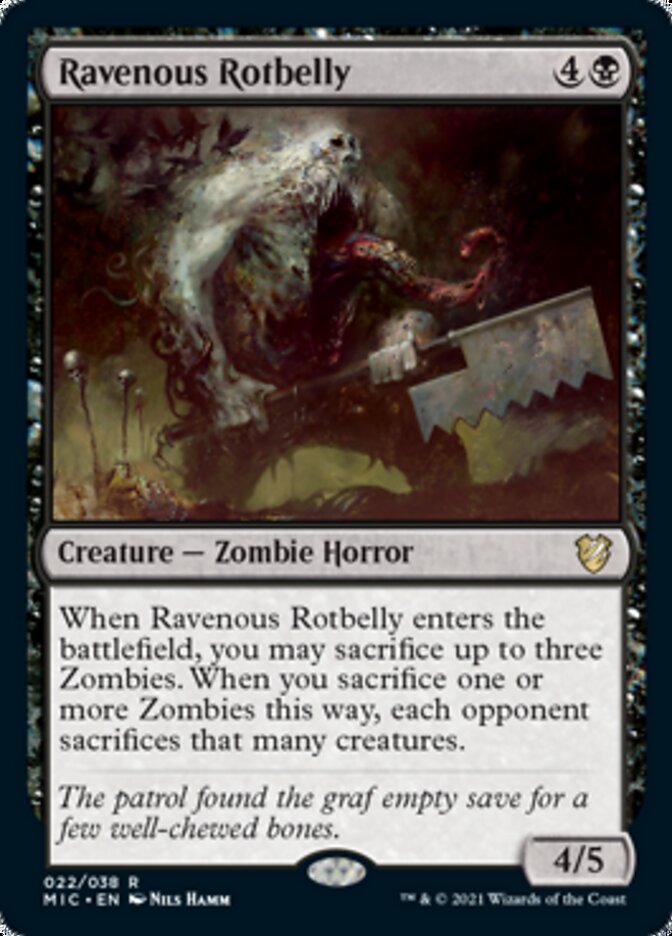
You need plenty of zombies for Ravenous Rotbelly to work but it does work if you feed it! A triple Fleshbag Marauder can be very impactful, especially since zombie decks tend to have tokens they don’t mind losing.
#27. Sheoldred
Sheoldred is just a solid midrange card. The front face is an effective 2-for-1 on a reasonably statted body that kills a creature. If you flip it, The True Scriptures provides enough value to win a game over a few turns.
#26. Soul Shatter
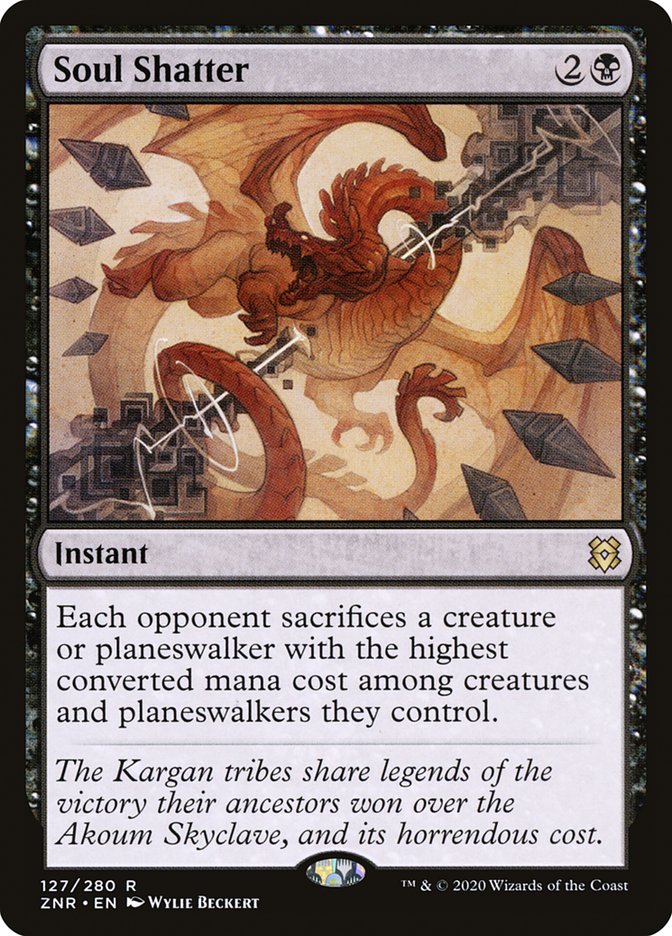
More black EDH decks should consider Soul Shatter. 3 mana to kill three creatures or planeswalkers is a pretty good rate, and it almost always trades up in mana since your opponents must sacrifice their most expensive cards.
#25. Witch of the Moors
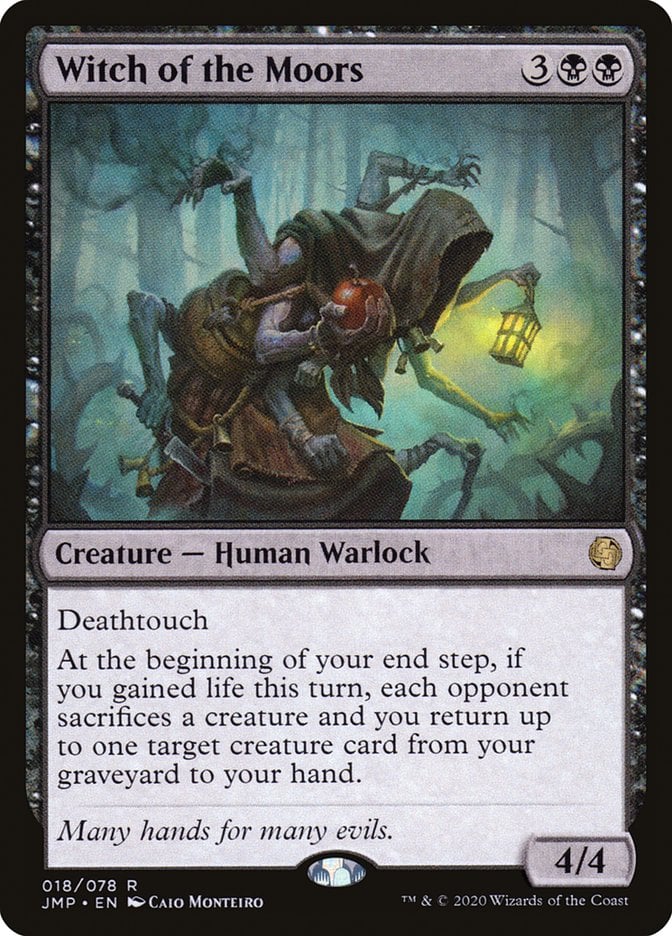
Any lifegain deck can leverage Witch of the Moors. It’s a potent source of card advantage for any deck capable of triggering it reliably each turn.
#24. Rise of the Witch-king
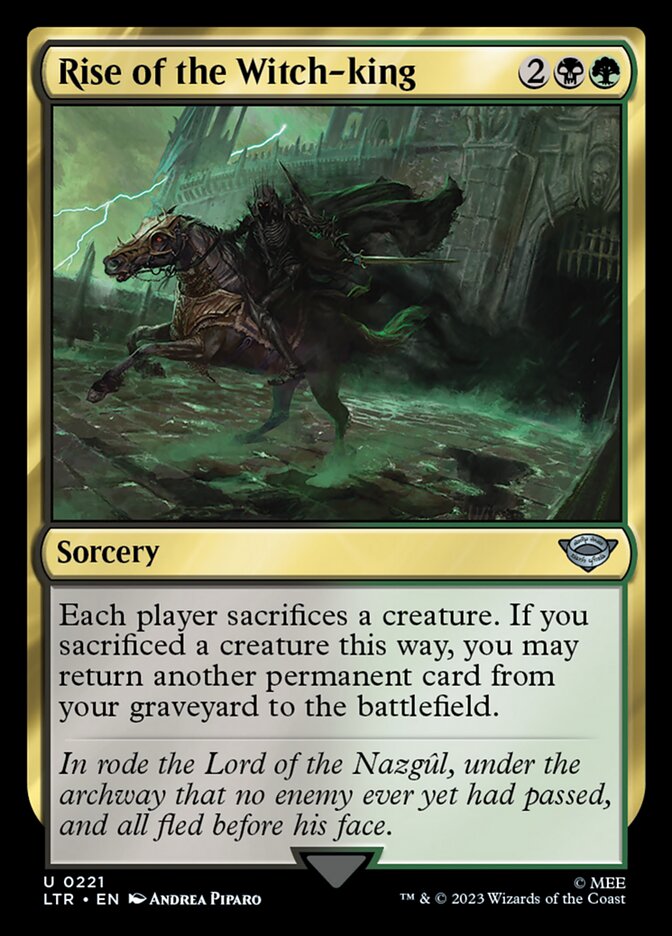
Rise of the Witch-king is a sub-par edict effect unless you use it to reanimate a creature. If you get the full value, it’s above-rate compared to other Rise from the Grave variants.
#23. Shadowgrange Archfiend
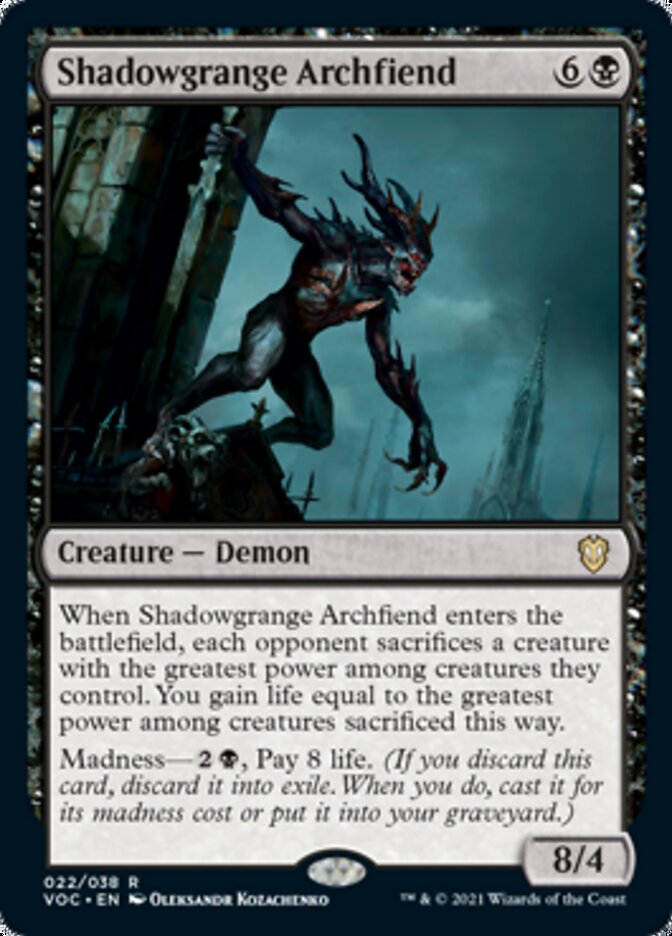
Shadowgrange Archfiend is the complete package: a massive threat that kills impactful creatures and provides a large life swing. Getting to cast it for next to nothing through madness is the cherry on top.
#22. Smallpox
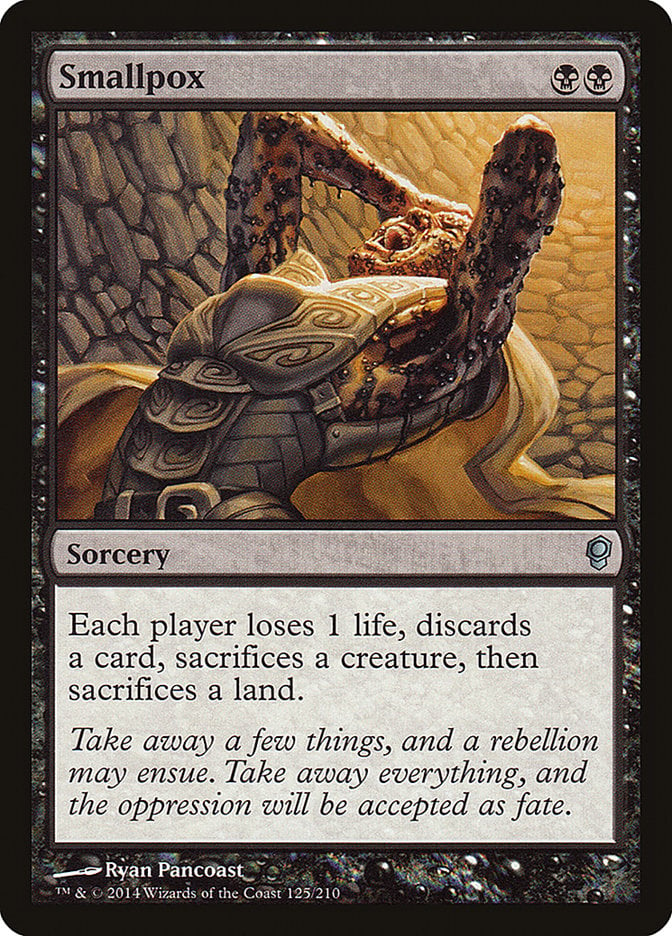
Smallpox is often leveraged in Constructed decks using cards like Flagstones of Trokair to offset the land sacrifice. It’s quite potent, especially in formats where players run 18 lands.
#21. Smokestack
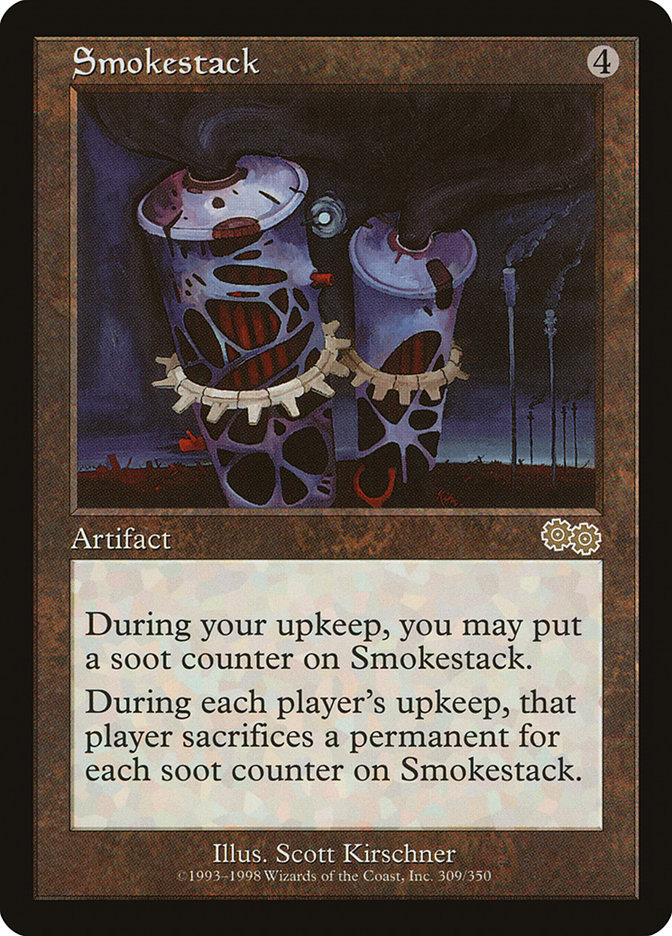
Smokestack is a classic stax piece that chews away at your opponents’ resources. The best way to leverage this is with token producers. Cards like Bitterblossom and Dreadhorde Invasion go a long way to mitigating Smokestack’s impact on your board.
#20. Butcher of Malakir
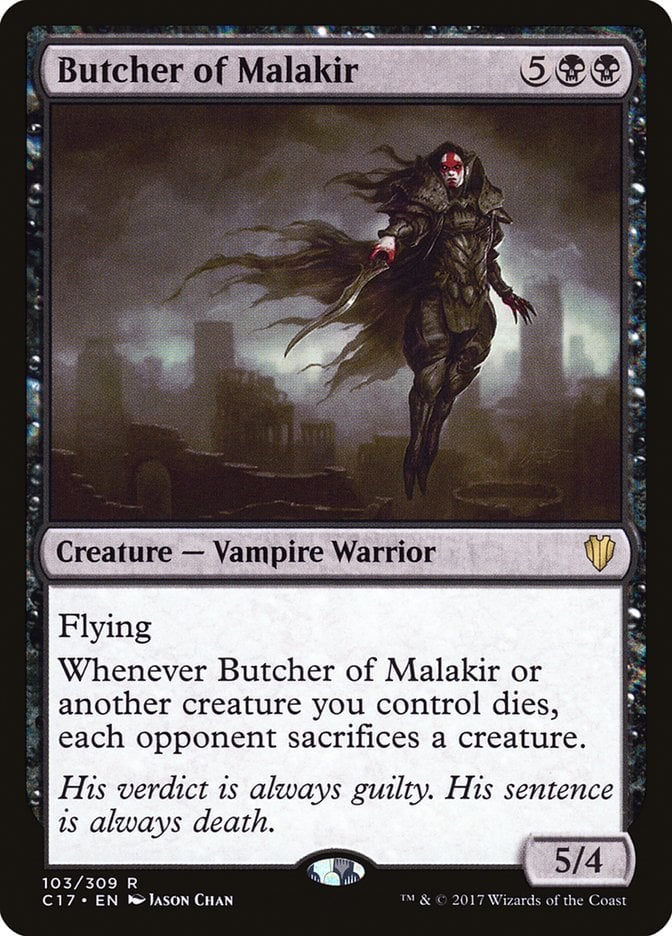
Aristocrat strategies love Butcher of Malakir. Killing your creatures is trivial. It only takes a few triggers of this ability to butcher your opponents’ boards and leave yourself the clear victor.
#19. Professor Onyx
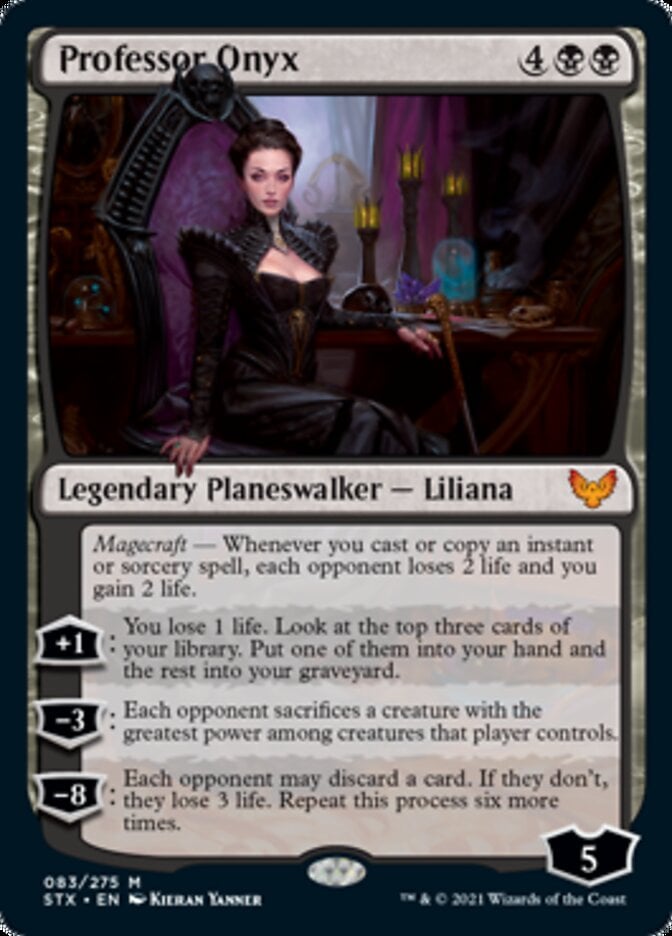
Getting an edict stapled to a planeswalker is rarely bad. Professor Onyx protects itself well enough while drawing cards later. The magecraft ability becomes an easy win condition with infinite combos or Chain of Smog.
#18. World Queller
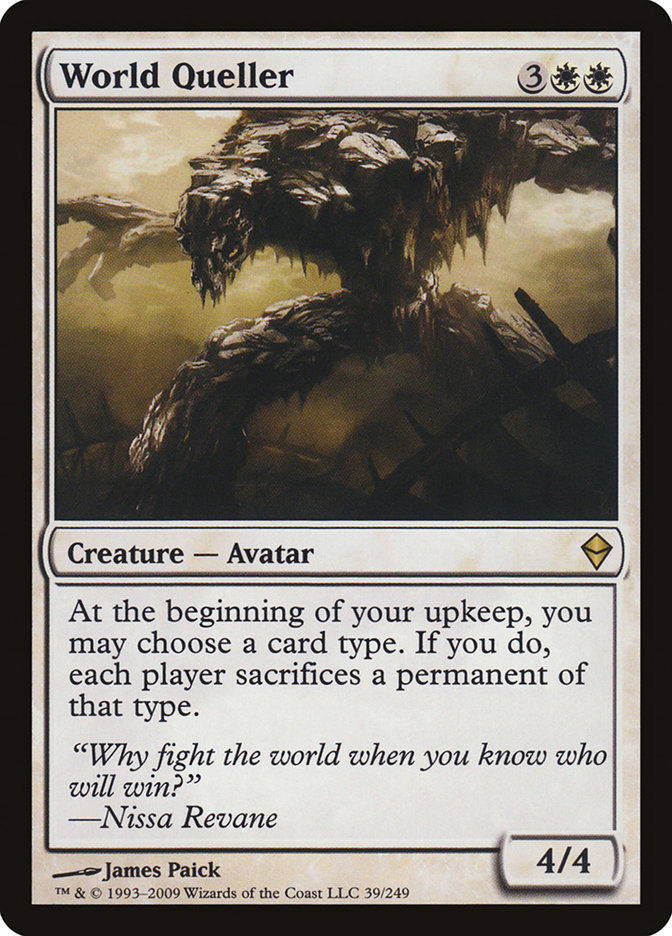
World Queller offers plenty of flexibility. It’s a great way to discourage opponents from playing the first enchantment or planeswalker on the battlefield. A deck built excluding a certain card type—say, no artifacts because it wants to leverage Collector Ouphe—can do a lot with this effect.
#17. Chainer’s Edict
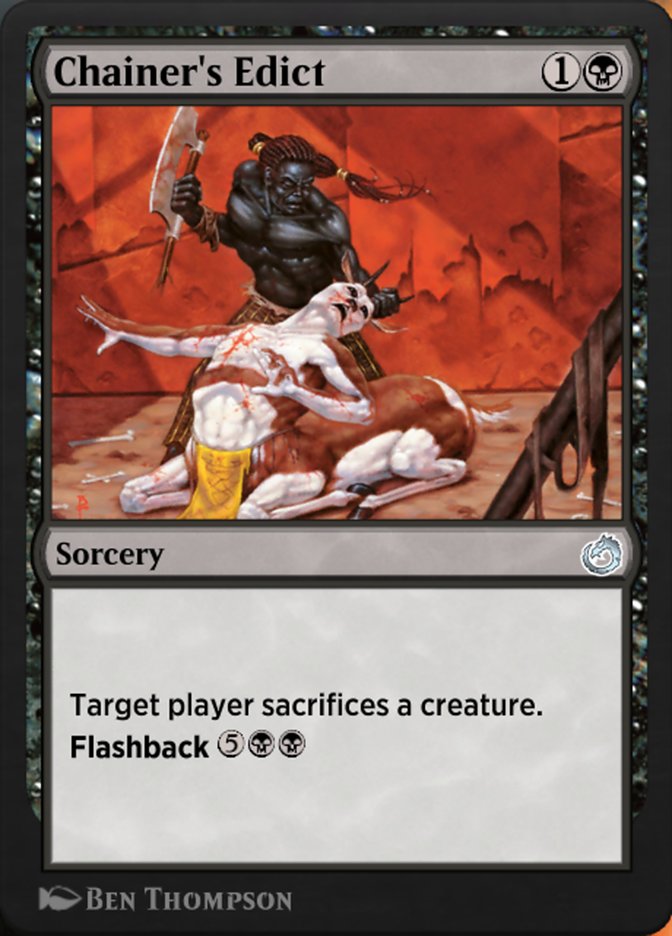
Chainer's Edict works great in grindy, lower-powered environments. It’s seen plenty of play in Pauper and does a lot of work in some Cubes. The price for flashback is costly, bordering on highway robbery, but a solid 2-for-1 can do the trick.
#16. Vona’s Hunger

Edict effects typically suffer from your opponents having a wide board, but Vona's Hunger can capitalize on it. It takes little effort to obtain the city’s blessing, so this often kills a lot of creatures, especially later in the game.
#15. Dictate of Erebos

Dictate of Erebos provides another way to punish our opponents for our creatures dying. Flash is quite nice here; we can play it in response to a removal spell to punish our opponents for interacting with our board or hold this up alongside countermagic.
#14. Invoke Despair
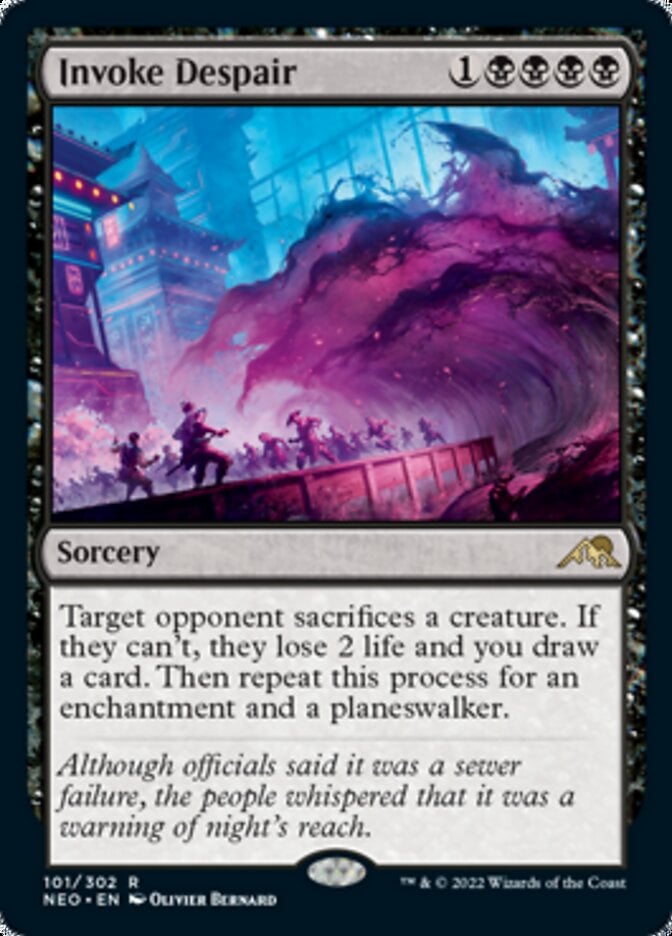
Too good for Standard, Invoke Despair guarantees plenty of card advantage. This kills three permanents for a 3-for-1 or draws three cards—which is still a 3-for-1! The restrictive mana cost holds this card back, but it’s still very castable.
#13. Tragic Arrogance

There are many variations on “Each player chooses a permanent of each type and sacrifices the rest.” While Wrath of God doesn’t leave your opponent with their best creature, these effects have the benefit of removing more than just creatures. Tragic Arrogance stands tall among similar effects because it allows you to choose which permanents everyone keeps.
#12. Sheoldred, Whispering One
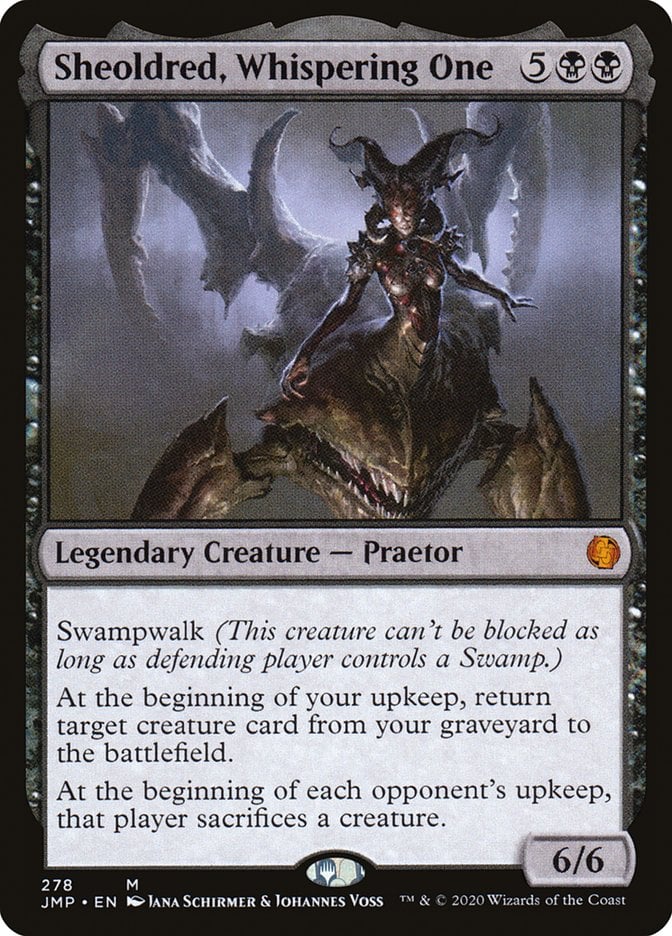
Sheoldred, Whispering One is one of Commander's most iconic reanimation targets. Recent whoppers like Etali, Primal Conqueror and Atraxa, Praetors' Voice mean Sheoldred isn’t the haymaker it once was, but it’s still a perfectly respectable way to accrue a board advantage.
#11. Gix’s Command
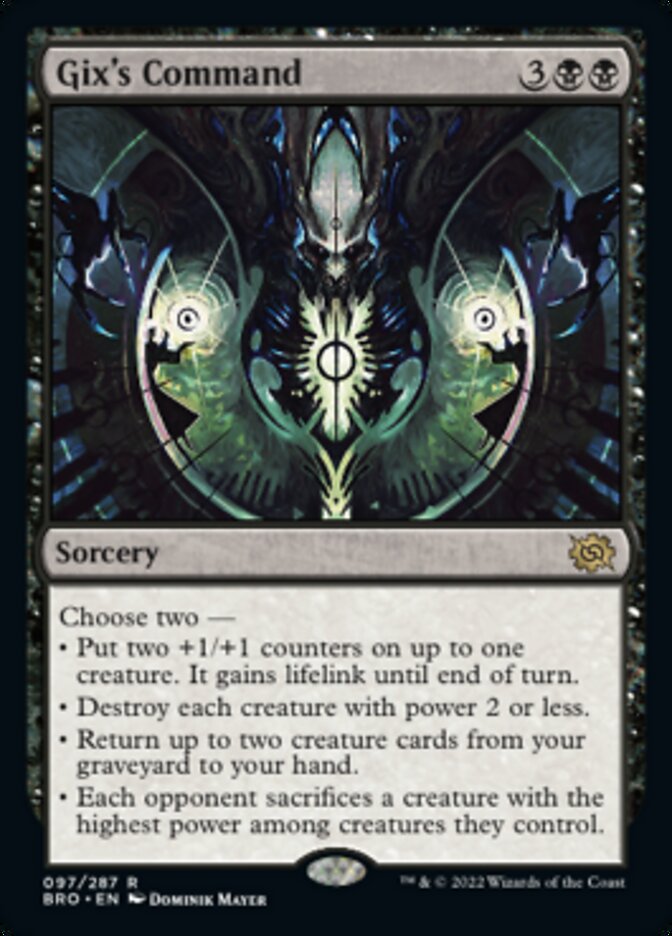
I highly value the flexibility of commands and charms, especially in EDH where you never quite know what you’ll find. Gix's Command does a good board wipe impression when you kill all small creatures and your opponents’ largest. You can also edict and draw two. Regardless of what you choose, this generates solid card advantage.
#10. Angrath’s Rampage

Angrath's Rampage is short and sweet. It’s great at sniping off early mana dorks and Sol Rings. Later in the game, it trades with planeswalkers pretty well.
#9. The Eternal Wanderer

The Eternal Wanderer is another mass edict effect that obliterates opposing forces. You can force your opponent to keep their worst creature or use this as the basis for political negotiations. All this value comes attached to a strong planeswalker; getting tokens and flickering permanents is easy for white to capitalize on.
#8. Archfiend of Depravity

Archfiend of Depravity is a great way to control your opponents’ boards. This demon's consistent board control is especially hard on token decks and other go-wide strategies.
#7. Liliana, Dreadhorde General
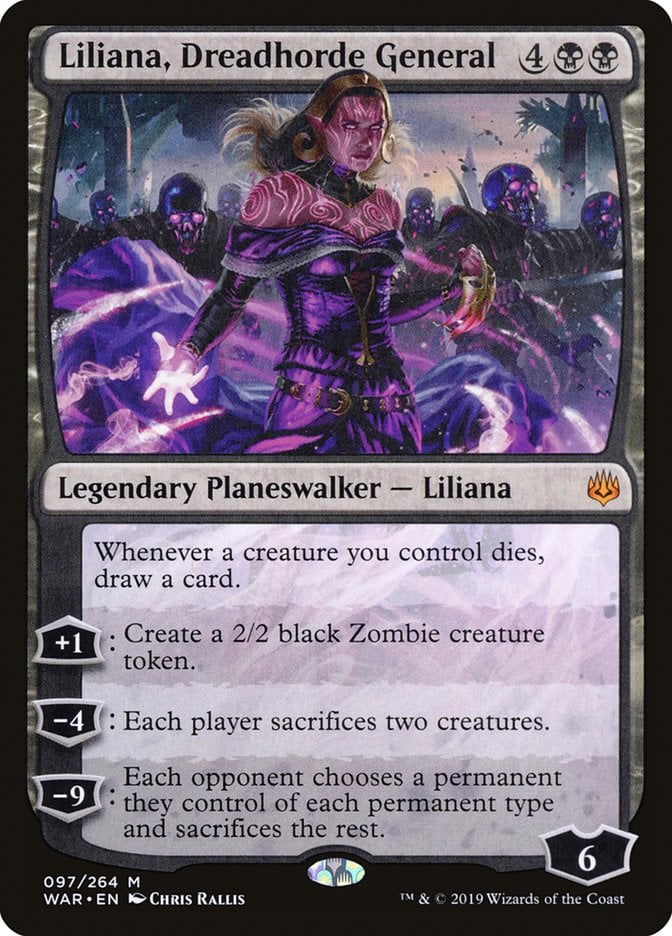
Making each player sacrifice two creatures already works as card advantage, as you’ll give up two creatures to remove six. But Liliana, Dreadhorde General’s static ability ensures you get even more value. The ultimate is the uber-powered version of Tragic Arrogance, destroying even your opponents’ mana base.
#6. Pox

Pox is often leveraged in mono-black control decks. Premodern decks are most likely to use it these days, though cEDH and Legacy decks spread the plague. This tears through an opponent’s board and hand, leaving them with few resources.
#5. Plaguecrafter

Fleshbag Marauder has many variants which I’m grouping under this ranking. They deserve this spot because they’re the easiest of all edict effects to exploit. Plaguecrafter stands tall as the strongest variant. Including planeswalkers and providing value even if your opponents don’t control creatures makes this a marked upgrade to the OG edict creature.
#4. Sheoldred’s Edict

I mentioned Sheoldred's Edict in the beginning as a massive improvement on Diabolic Edict, and that holds true! Choosing which type of permanent your opponent sacrifices narrows their options and increases the odds of them sacrificing the creature you want them to without targeting it.
#3. Portal to Phyrexia

Portal to Phyrexia is quite an expensive edict but backs it up with plenty of game-winning potential. Making your opponents sacrifice nine creatures altogether and then getting to reanimate them ends games quickly. I recommend trying to cheat this into play instead of just casting it, unless you’re in green.
#2. Grave Pact
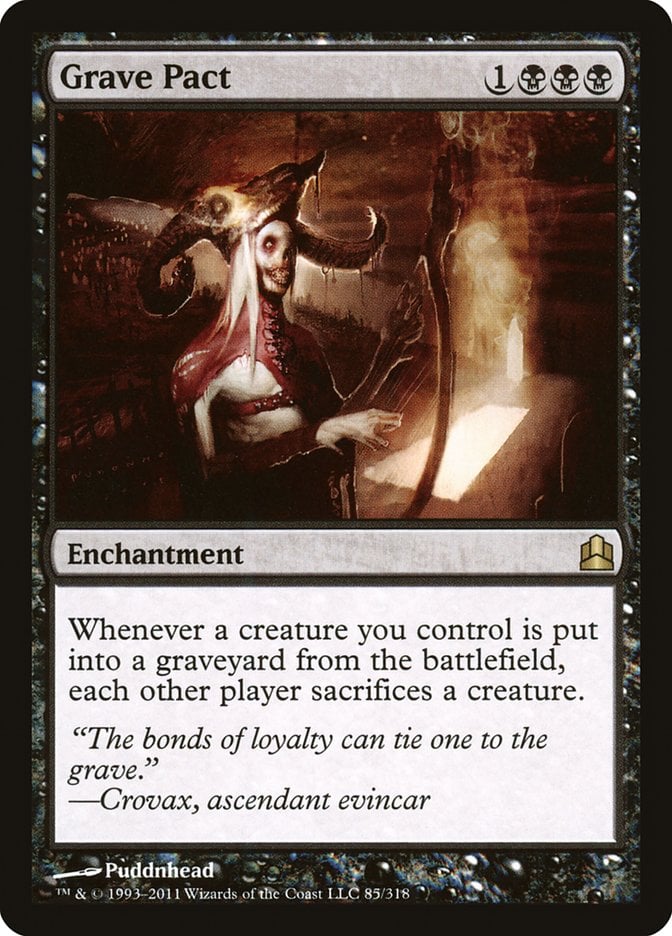
Grave Pact secures this ranking solely for its power in EDH. It’s the best version of this effect for two reasons. First, it’s the cheapest. Secondly, it’s much harder to interact with an enchantment than a creature. This offers incredible board control that’s hard to beat—and yes, I really value this being 1 mana cheaper than Dictate of Erebos.
#1. Liliana of the Veil
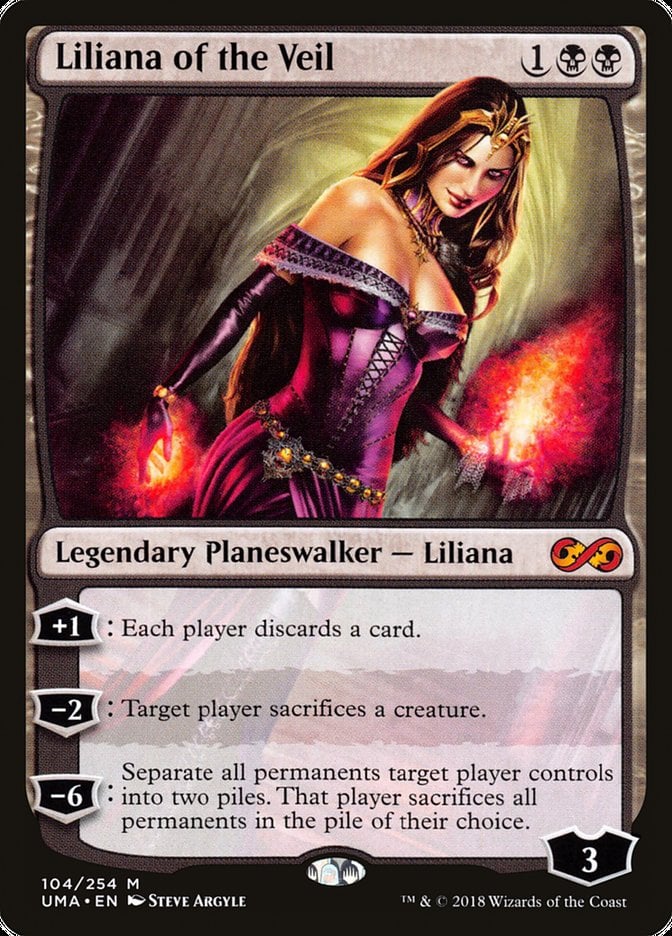
To reduce Liliana of the Veil to a mere edict effect would be to ignore the legacy of one of the strongest planeswalkers in Magic’s history. It feels impossible to lose with Lili on the play when you kill your opponent’s 2-drop. The edict ability doesn’t hold up in EDH, but the discard ability scales well in multiplayer.
Best Edict Effect Payoffs
Interaction is a reward all on its own, but there are a couple of ways to make the most of your edicts. First and foremost are cards that care about players sacrificing permanents. Cards like Mayhem Devil and Mazirek, Kraul Death Priest benefit from multiple players sacrifice permanents. Since most edicts hit creatures, they help leverage death-trigger abilities like Blood Artist and Morbid Opportunist. I’d be a fool to ignore Tergrid, God of Fright.
Edict creatures are particularly exploitable. Plaguecrafter, Fleshbag Marauder, and similar effects are strong on their own but flourish with a bit of support, especially in EDH. Meren of Clan Nel Toth and Carmen, Cruel Skymarcher, are two commanders that make excellent use of these creatures. By sacrificing and reanimating them, you establish a grindy game plan that hampers your opponents’ ability to maintain a board state.

For competitive formats, edicts can do lots of work out of the sideboard. They may be weak against a broad field, but edict effects devastate strategies like Bogles or various Tolarian Terror decks in Pauper. Having them as a silver bullet against those strategies can be useful.
Wrap Up
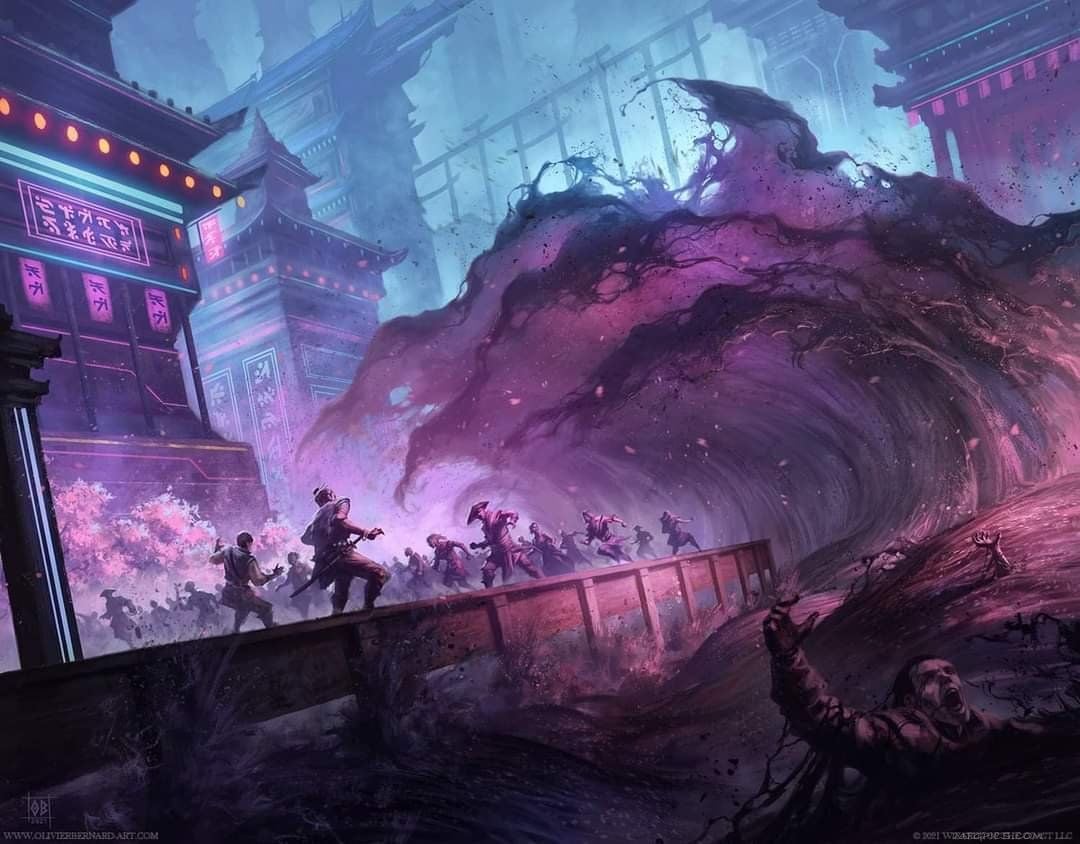
Invoke Despair | Illustration by Olivier Bernard
Edicts are a classic form of interaction. They have some prominent weaknesses compared to traditional spot removal, but some strengths that make up for those weaknesses. Recent edicts have even worked to address the traditional weaknesses.
What’s your favorite edict effect? Do you like edicts, or do you prefer regular spot removal? Let me know in the comments or on the Draftsim Discord!
Stay safe, and thanks for reading!
Follow Draftsim for awesome articles and set updates:

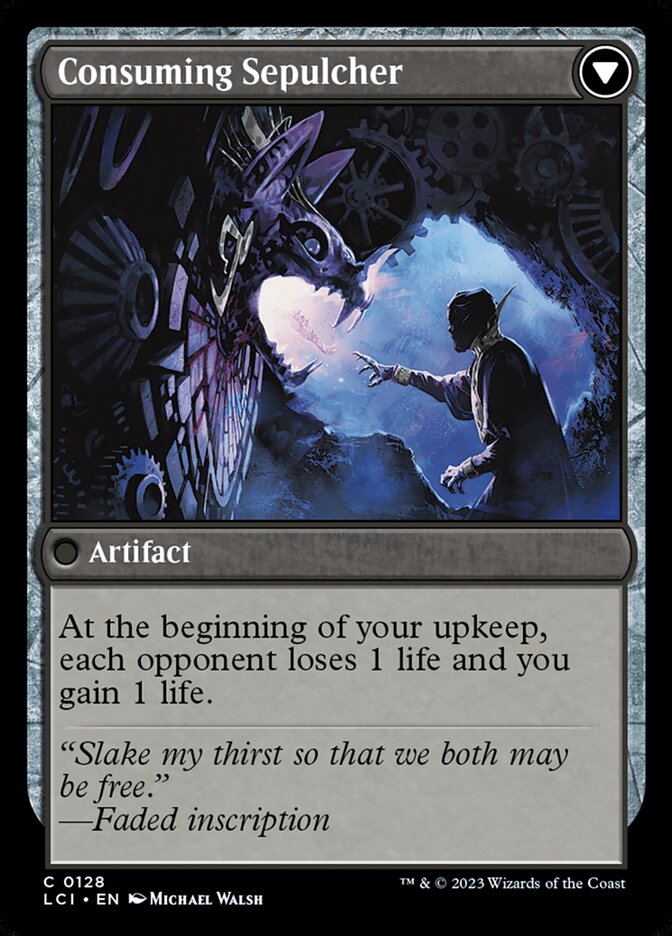
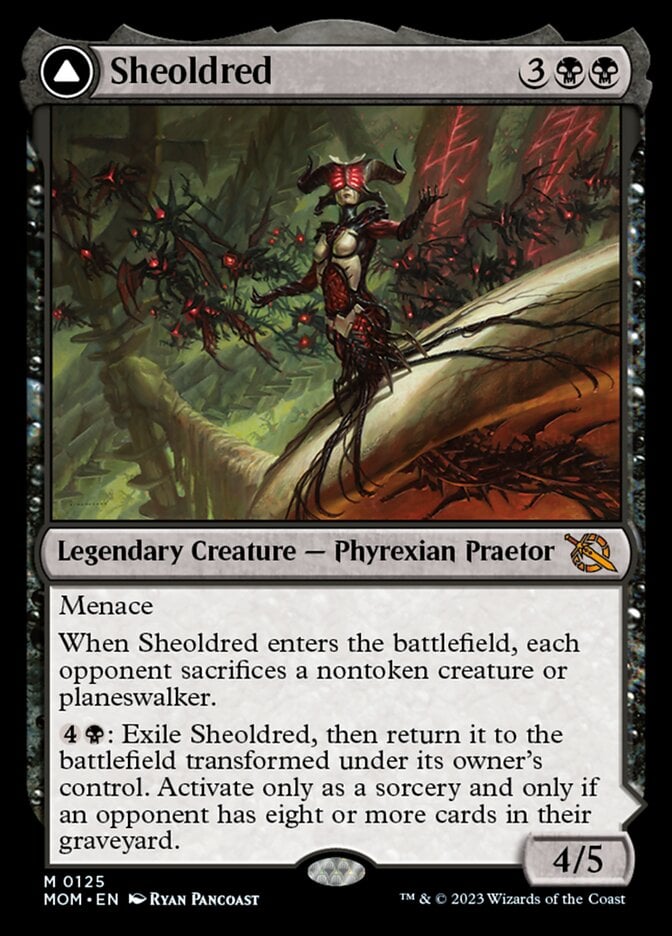


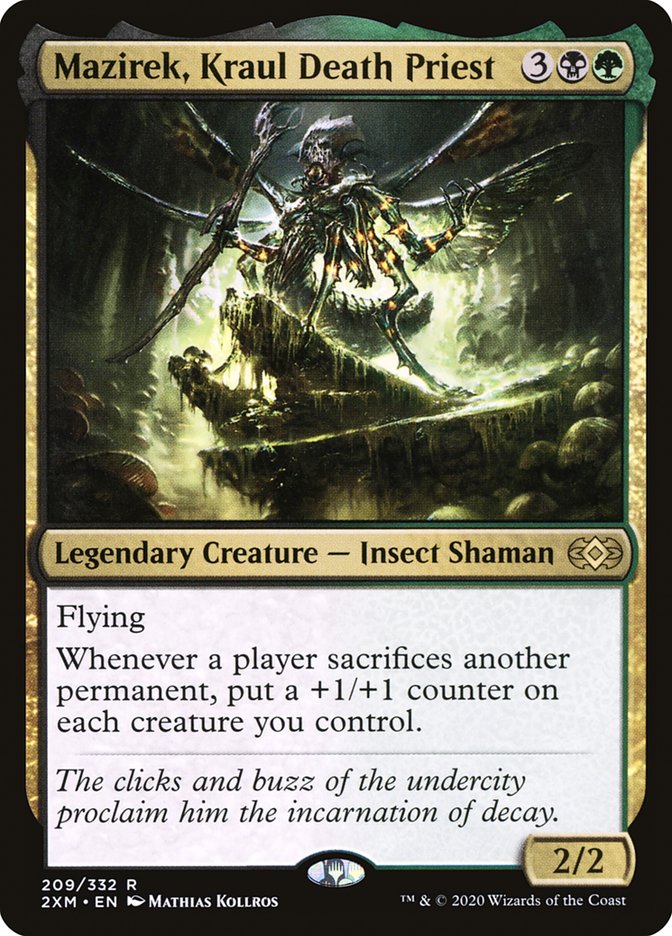
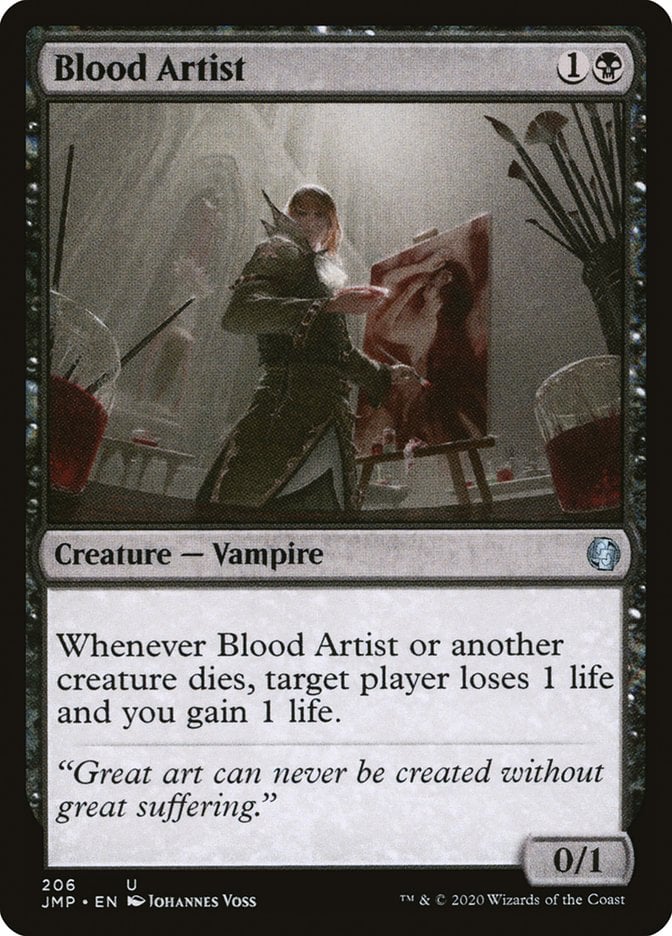
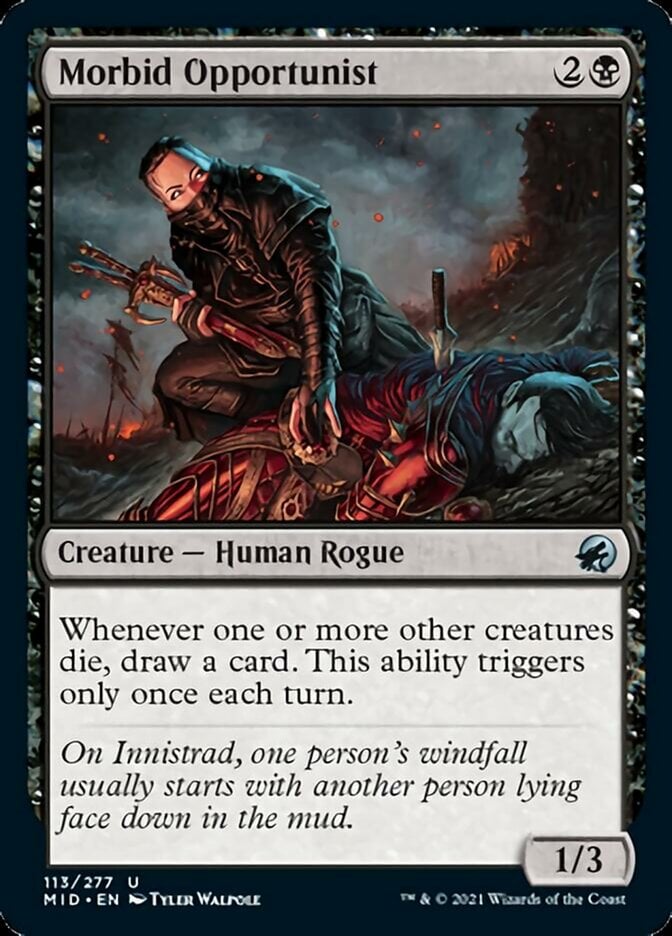

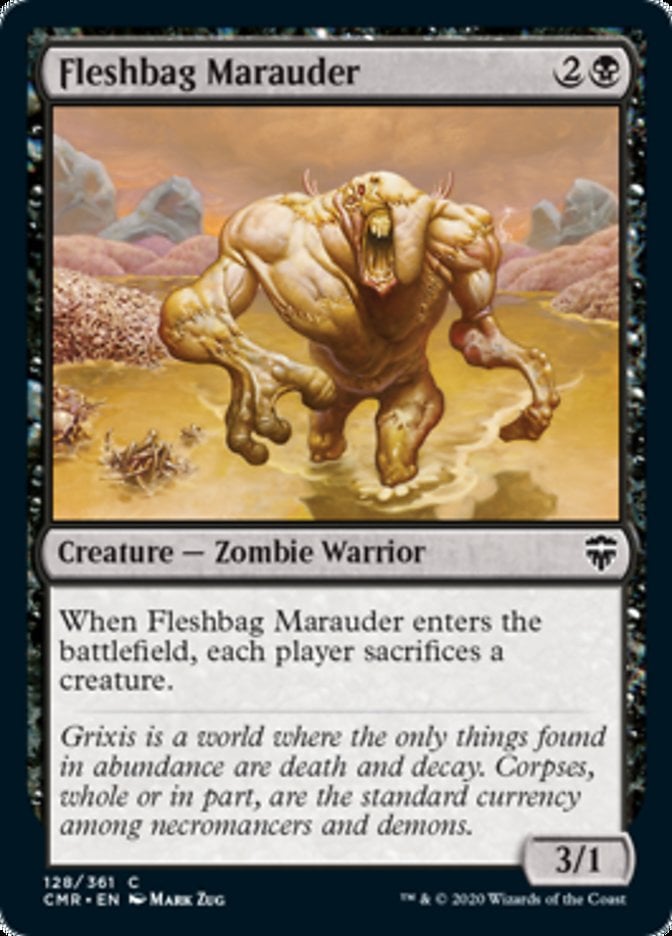


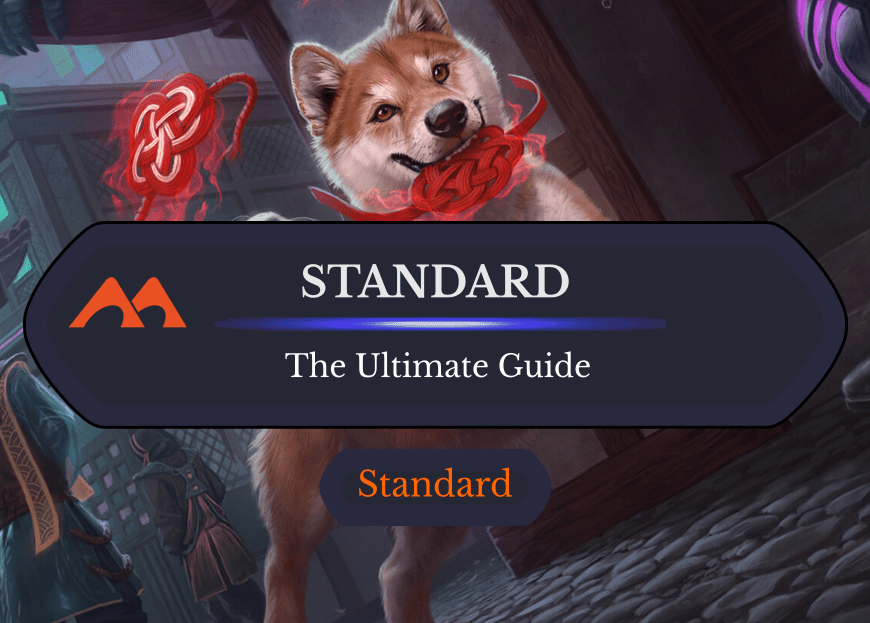

2 Comments
Choice of Damnations says “all but one”, fam.
Thanks for catching that! I’ve corrected the error 🙂
Add Comment